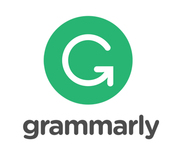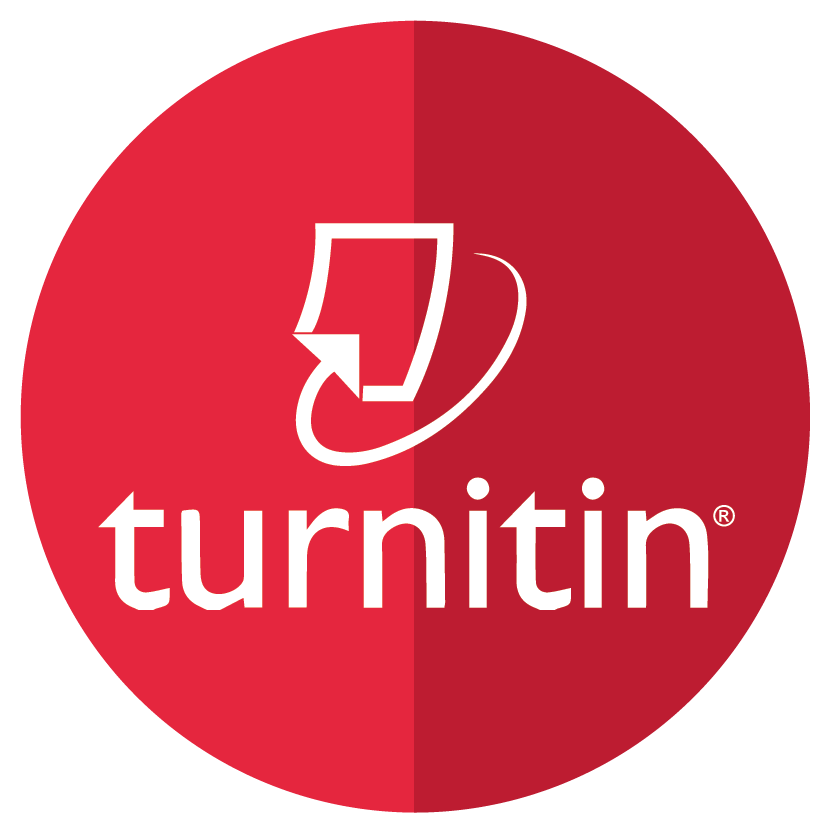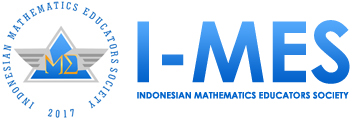STUDENTS’ NUMERACY SKILLS IN SOLVING MINIMUM COMPETENCY ASSESSMENT (MCA)-TYPE MATHEMATICS PROBLEMS: A CASE STUDY IN JUNIOR HIGH SCHOOL
Abstract
Numeracy skills is one of the abilities of students who use mathematics as a tool to solve problems in everyday life. Therefore, this research aims to analyze students' numeracy skills to solve the Minimum Competency Assessment (AKM) type mathematics problems. This research method is a case study in one of the state schools in Yogyakarta. The results of this research show that students' numeracy abilities in solving mathematics problems, especially AKM type questions, can be demonstrated from students' ability to understand facts, processes, concepts and procedures; ability to apply conceptual knowledge and understanding in solving mathematical problems in everyday life; and reasoning abilities in analyzing data and information, making conclusions, and expanding understanding. In general, students have numeracy skills in the advanced category with characteristics including students having basic mathematical concepts and having ideas for determining strategies for solving problems very well. Then, students are also able to reason in solving complex and non-routine problems based on their mathematical concepts. With this, it is hoped that students can use their numeracy skills to solve problems they encounter in daily life.
Copyright © 2021UniversitasSiliwangi.
All rights reserved.
Full Text:
PDFReferences
Asrijanty. (2020). Asesmen Kompetensi Minimum (AKM) dan implikasinya pada pembelajaran. Pusat Asesmen dan Pembelajaran, Kemendikbudristek RI.
Braithwaite, D. W., & Sprague, L. (2021). Conceptual knowledge, procedural knowledge, and metacognition in routine and nonroutine problem solving. Cognitive Science, 45(10). https://doi.org/10.1111/cogs.13048
Breakspear, S. (2012). The policy impact of PISA: An exploration of the normative effects of international benchmarking in school system performance. OECD Education Working Papers, 71, OECD Publishing, Paris, https://doi.org/10.1787/5k9fdfqffr28-en.
Cahyanovianty, A., & Wahidin, W. (2021). Analisis kemampan numerasi peserta didik Kelas VIII dalam menyelesaikan soal Asesmen Kompetensi Minimum (AKM). Jurnal Cendekia: Jurnal Pendidikan Matematika, 5(2), 1439-1448. https://doi.org/10.31004/cendekia.v5i2.651
Davis, J. (2013). Student understandings of numeracy problems: Semantic alignment and analogical reasoning. The Australian Mathematics Teacher, 69(2), 19–26. https://search.informit.org/doi/10.3316/informit.642989128192841
Frankenstein, M. (2010). Developing critical mathematical numeracy through real real-life word problems. In U. Gellert, E. Jablonka, & C. Morgan (Eds.), Proceedings of the sixth international mathematics education and society conference (pp. 248–257). Berlin: Freie Universität Berlin.
Geiger, V., Goos, M. & Forgasz, H. (2015). A rich interpretation of numeracy for the 21st century: a survey of the state of the field. ZDM Mathematics Education, 47, 531–548. https://doi.org/10.1007/s11858-015-0708-1
Geiger, V., Goos, M., & Dole, S. (2014). Students’ perspectives on their numeracy development across the learning areas. In Y. Li & G. Lappan (Eds.), Mathematics curriculum in school education (pp. 473–492). Springer.
Hidayatullah, A., & Csíkos, C. (2022). Mathematics Related Belief System and Word Problem-Solving in the Indonesian Context. Eurasia Journal of Mathematics, Science and Technology Education, 18(4), em2094. https://doi.org/10.29333/ejmste/11902
Kemendikbudristek. (2023). Rapor Pendidikan Indonesia Tahun 2023. Diunduh di https://raporpendidikan.kemdikbud.go.id/
Liljedahl, P. (2015). Numeracy task design: a case of changing mathematics teaching practice. ZDM Mathematics Education, 47(4). https://doi.org/10.1007/s11858-015-0703-6
Martínez-Pérez, S.A., & Sanchez, E.A.S. (2022). High school students’ reasoning on the frequency approach of probability when facing a non-routine problem. Canadian Journal of Science, Mathematics and Technology Education, 22, 631–644. https://doi.org/10.1007/s42330-022-00232-3
NCES. (2020). Program for International Student Assessment (PISA). https://nces.ed.gov/surveys/pisa/overview.asp
Nortvedt, G.A. (2011). Coping strategies applied to comprehend multistep arithmetic word problems by students with above-average numeracy skills and below-average reading skills. The Journal of Mathematical Behavior, 30(3), 255-269. https://doi.org/10.1016/j.jmathb.2011.04.003.
Nurmaya, R., Muzdalipah, I., & Heryani, Y. (2022). Analisis proses literasi matematis siswa dalam menyelesaikan soal model asesmen kompetensi minimum. Teorema: Teori dan Riset Matematika, 7(1), 13-26. http://dx.doi.org/10.25157/teorema.v7i1.6378
OECD. (2023). PISA 2022 Results: Factsheets Indonesia. OECD Publishing. https://www.oecd.org/publication/pisa-2022-results/country-notes/indonesia-c2e1ae0e/
Putri, R. I. I., Zulkardi, & Riskanita, A. D. (2022). Students’ problem-solving ability in solving algebra tasks using the context of Palembang. Journal on Mathematics Education, 13(3), 549–564. https://doi.org/10.22342/jme.v13i3.pp549-564
Saefudin, A. A., Wijaya, A., & Dwiningrum, S. I. A. (2023). Mapping research trends in mathematical creativity in mathematical instructional practices: A bibliometric analysis. Journal of Pedagogical Research, 7(4), 439-458. https://doi.org/10.33902/JPR.202322691
Sari, R. D., Lusiana, R., & Susanti, V. D. (2023). Analysis of students’ mathematical literacy ability in solving minimum competency assessment (AKM) problems. Jurnal Math Educator Nusantara: Wahana Publikasi Karya Tulis Ilmiah Di Bidang Pendidikan Matematika, 9(1), 1-14. https://doi.org/10.29407/jmen.v9i1.18516
Schoch, K. (2020). Case study research. In Research design and methods: An applied guide for the scholar-practitioner, 245–258. SAGE.
Sunderaraman, P., Barker, M., Chapman, S., & Cosentino, S. (2022) Assessing numerical reasoning provides insight into financial literacy. Applied Neuropsychology: Adult, 29(4), 710-717, https://doi.org/10.1080/23279095.2020.1805745
Wijaya, A., Heuvel-Panhuizen, M. v. d. & Robitzch, M. D. A. (2014). Difficulties in solving context-based PISA matehmatics task: An analysis of students' error. The Mathematics Enthusiast, 11(3), 555-584. https://doi.org/10.54870/1551-3440.1317
Xiao, F., Barnard-Brak, L., Lan, W., & Burley, H. (2019). Examining problem-solving skills in technology-rich environments as related to numeracy and literacy. International Journal of Lifelong Education, 38(3), 327-338, https://doi.org/10.1080/02601370.2019.1598507
DOI: https://doi.org/10.37058/jarme.v7i2.10178
Refbacks
- There are currently no refbacks.

This work is licensed under a Creative Commons Attribution-ShareAlike 4.0 International License.
Journal of Authentic Research on Mathematics Education (JARME)
Program Studi Pendidikan Matematika, Universitas Siliwangi
Jl. Siliwangi no. 24 Kota Tasikmalaya - 46115
email: jarme@unsil.ac.id
e-ISSN: 2655-7762
Licensed under a Creative Commons Attribution 4.0 International License
StatCounter:
Detail
Indexed by :


.jpg)
.jpg)



